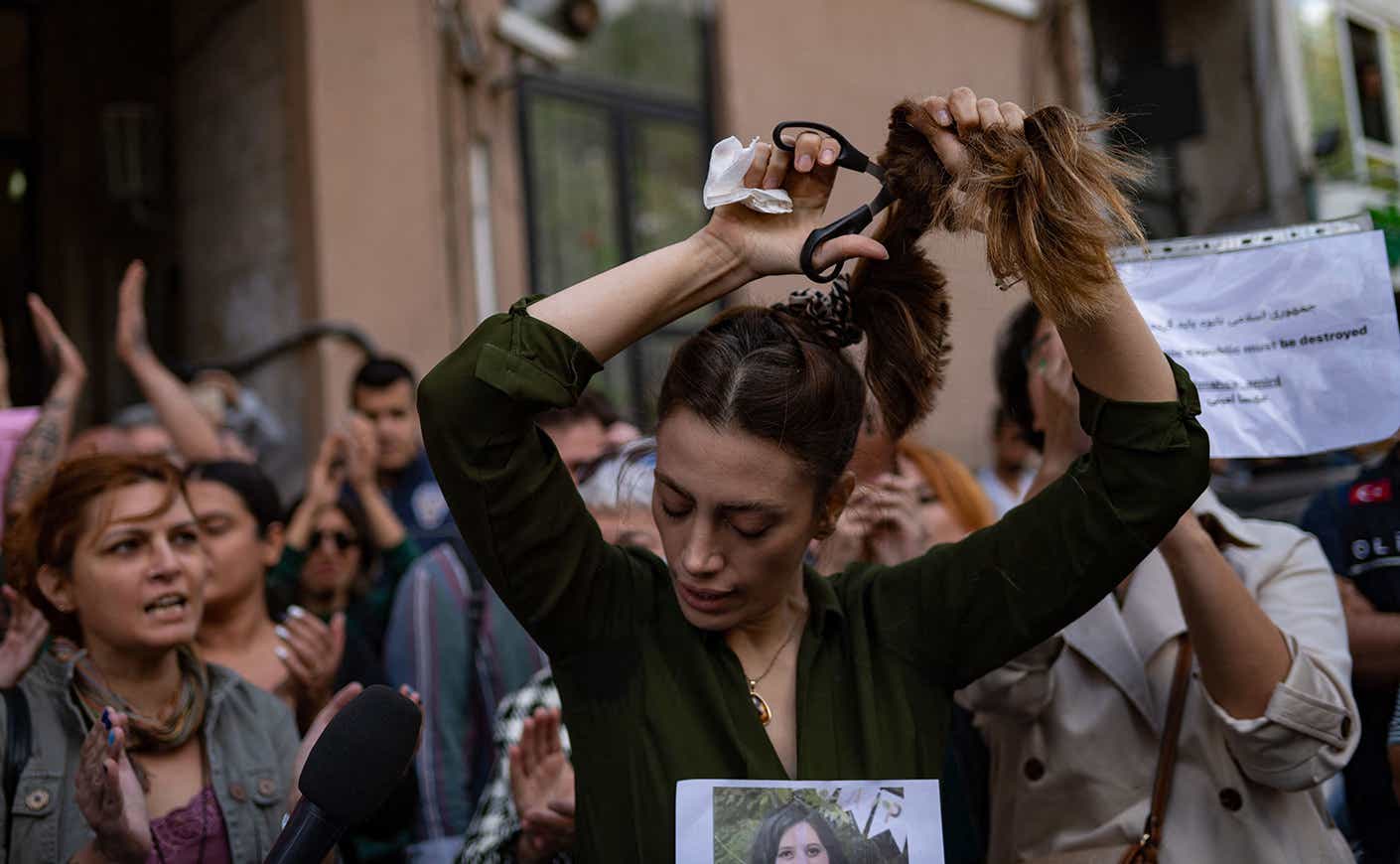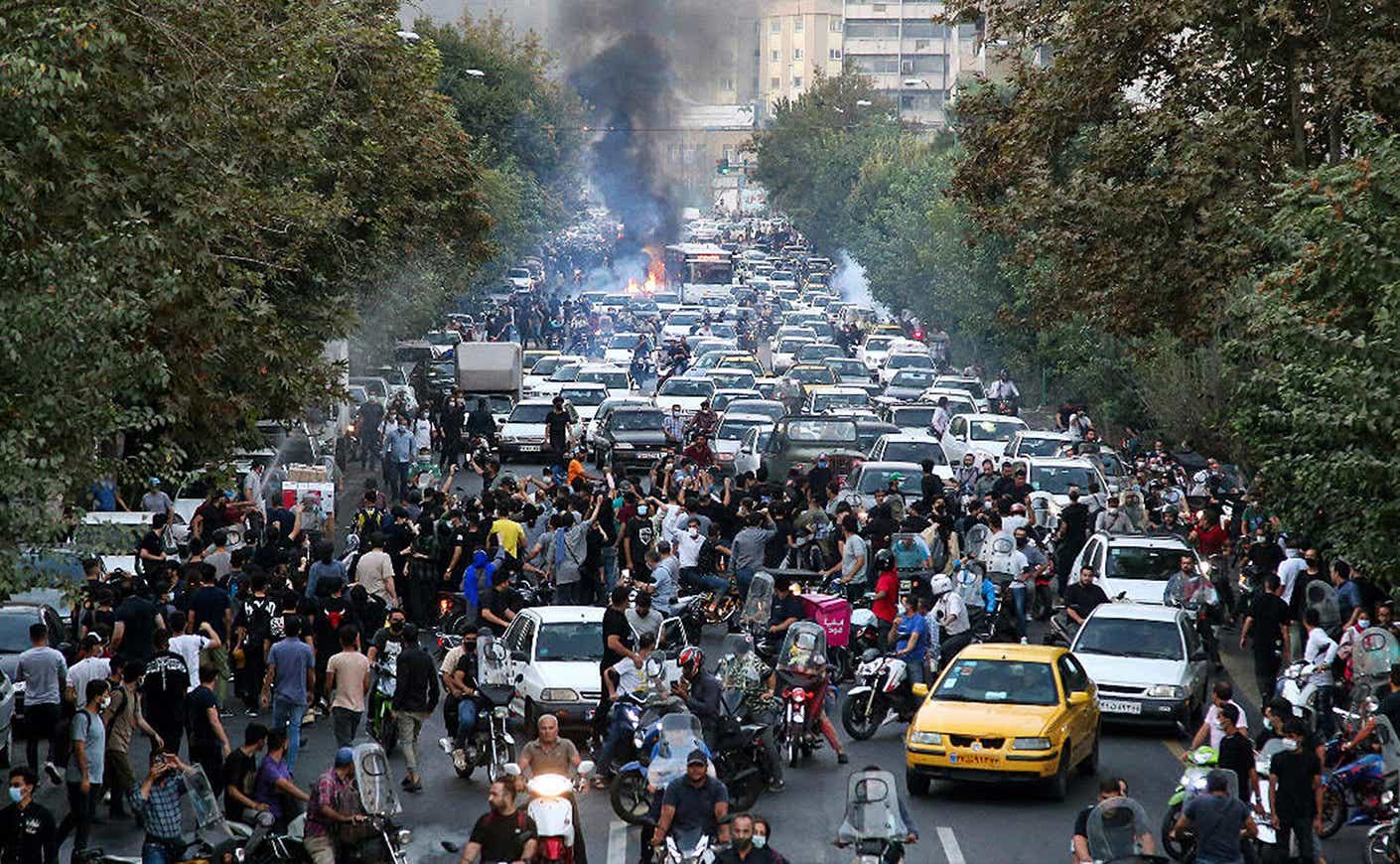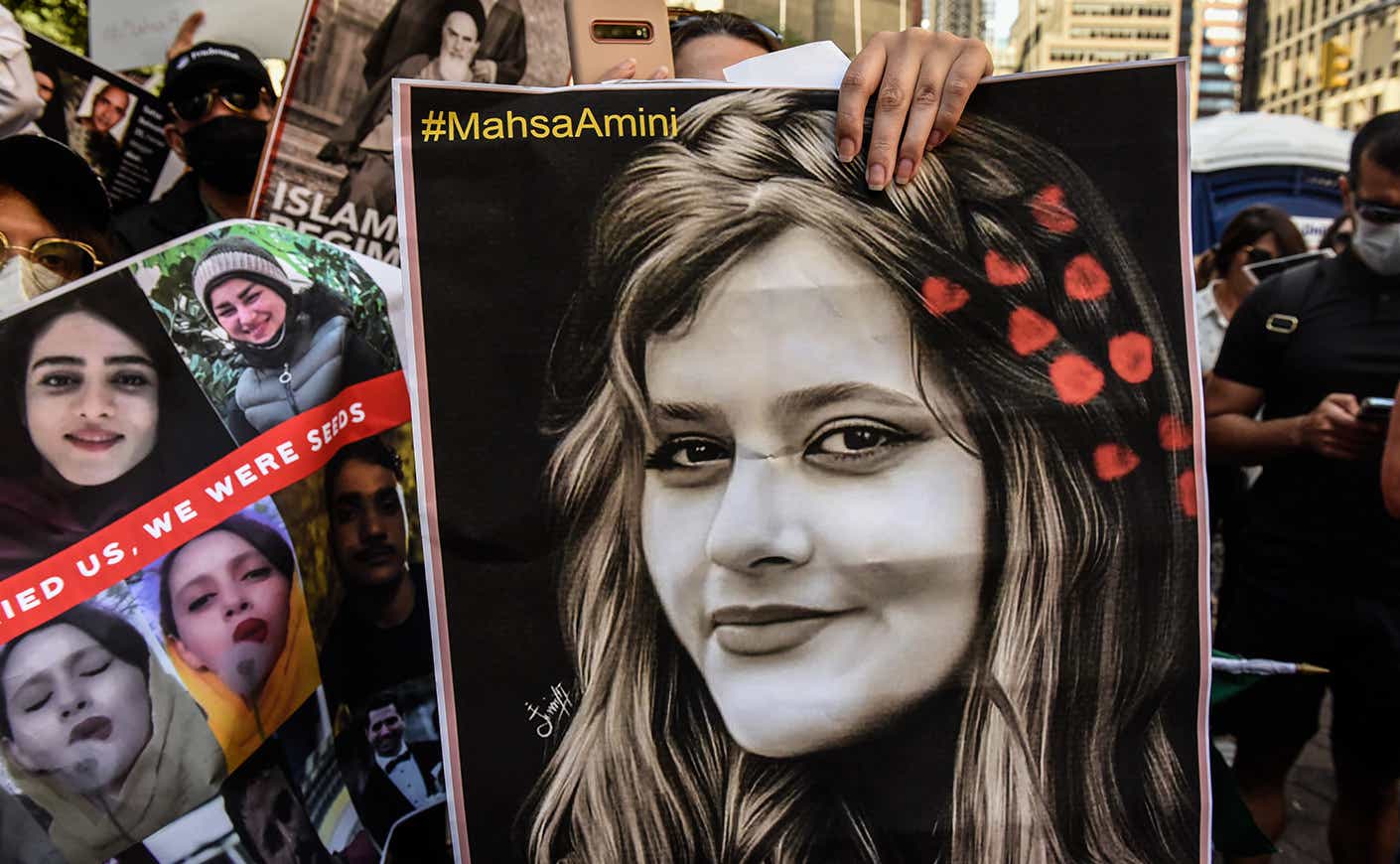There have been sweeping demonstrations in opposition of Iran’s strict hijab law.
The death of a young woman in Tehran has sparked days of intensifying protests throughout Iran — and led a growing number of women to burn their hijabs as a statement against oppression. Here’s what you need to know about the situation.
Who was Mahsa Amini?
The 22-year-old was arrested last week in Tehran for allegedly wearing her hijab improperly. Iran’s hijab law requires women past the age of puberty to wear a head covering and loose clothing. The rule is arbitrarily enforced by the country’s morality police, who have been known to inconsistently punish women who break the dress code — sometimes issuing fines while other times resorting to violence, The New York Times reports.
Amini died while in police custody. Authorities have said she suffered a heart attack, but her family has accused officers of beating her while she was transported in a police van — a claim backed up by eyewitnesses. The U.N. has called for an impartial inquiry into Amini’s death. Images of her lying comatose in a hospital bed, with tubes in her mouth and bruises around her eyes, have circulated on social media.
Protests are spreading
Outrage has fueled days of protests that have spread to more than a dozen cities in Iran and led to demonstrations globally. Protestors are calling out the country’s oppressive and violent treatment of women, with some demanding an end to the Islamic Republic itself. Crowds are chanting “death to the dictator” and “death to Khamenei,” referring to Iran’s supreme leader Ayatollah Ali Khamenei.

In open defiance of the hijab law, some women have been seen cutting their hair and removing their headscarves and burning them. A wave of women have recorded themselves doing the same on TikTok and Instagram.
“The anger on the streets is palpable,” Jasmin Ramsey, deputy director at the Center for Human Rights in Iran, tells the New York Times.
The country has responded by cracking down on protestors, and police have been seen shoving people to the ground, beating them, and firing shots and tear gas into crowds. So far, nine people have died in the confrontations, according to the Associated Press. In an attempt to contain the demonstrations, mobile internet access has been largely shut down and Instagram has been restricted. But the movement only appears to be gaining steam.

What is Iran’s morality police?
The country’s notorious enforcement agency has for decades policed the population, ensuring that its interpretation of Islamic law is followed. It has access to firearms, detention centers, and recently “re-education centers,” where women are held for not complying with the country’s dress code, CNN reports. Detainees are forced to attend classes about Islam and sign a pledge to abide by clothing regulations before they’re released. Since the centers were opened in 2019, countless women have been detained.
Headscarves have been mandatory for women in the country since the Islamic Revolution in 1979. Since then, there have been several anti-hijab movements, including “the girls of Revolution Street” of 2017.
Polls show that more and more Iranians believe hijabs should not be compulsory, and that the country should soften how it enforces Islamic values. This wave of protests shows how fed up Iranians have become.
“This time protestors aren’t only calling for justice for Mahsa Amini,” Hadi Ghaemi, head of the Center for Human Rights in Iran says. “They’re also calling for women’s rights, for their civil and human rights, for a life without a religious dictatorship.”









